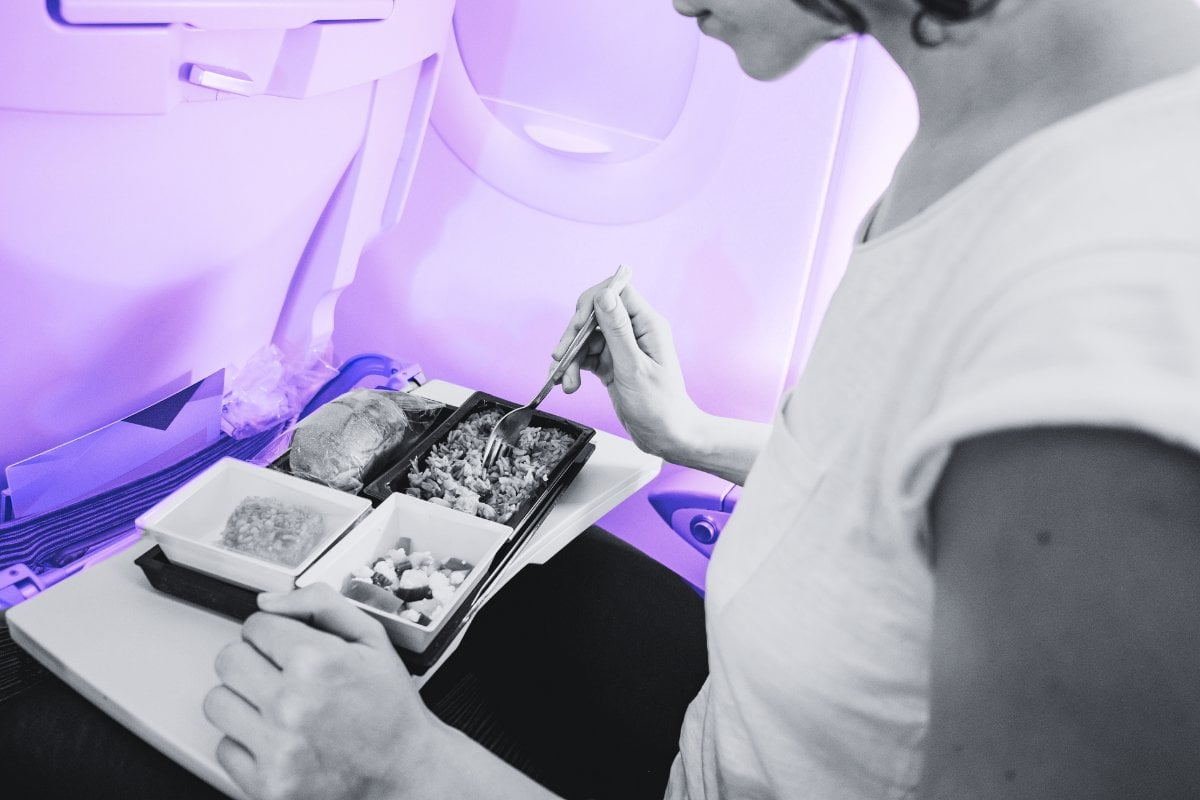
Going on holiday is one of the great joys in life. There's the booking part, then the excited anticipation of packing and then getting to the airport.
However, once you're on the plane, the glow of vacation buzz may start to fade. It might be the tightly packed seats, that *particular* smell coming from the lavatories, a dangling foot in your face or the realisation that, for the next few hours, you'll only be eating plane food.
Unless you're one of the lucky ducks to score an upgrade, flying economy comes with a selection of pre-packaged in-flight meals to choose from. And depending on the airline, these can range from actually relatively tasty to... downright inedible.
Now, it's important to note whether you're flying or just going about a regular day, you should definitely eat whatever floats your boat! This isn't about restricting eating, or telling anyone what they "should" or "shouldn't" eat. (I'm honestly partial to a good in-flight meal and am quite intrigued by the various combos each airline comes up with — each to their own, I guess!)
But if you've always grappled to make a choice when asked "would you like the chicken or the fish?" when the cabin crew coming strolling down the aisle with their trolley of delights (?!), there are actually some handy tips that will make sure you get the yummiest option.
Before you lock in the beef stroganoff or the butter chicken, dietician Lyndi Cohen (aka The Nude Nutritionist) says that it's important to note that, when you're flying high up in the air, there's a scientific reason the food might not taste so great.
